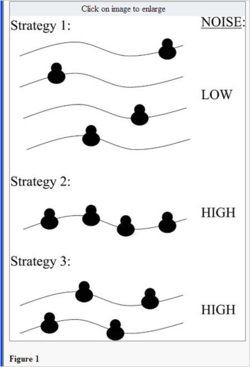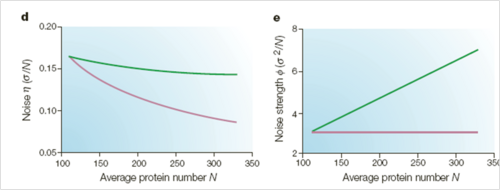Difference between revisions of "Translational Bursting"
| Line 12: | Line 12: | ||
[[Image:Protein_level_effects.png| 500 px]] | [[Image:Protein_level_effects.png| 500 px]] | ||
<br> | <br> | ||
| − | This image depicts the effect of varying levels of transcription and translation on noise and noise strength | + | This image depicts the effect of varying levels of transcription and translation on [[noise and noise strength | Noise as a Variable]]. |
<br><br><br> | <br><br><br> | ||
<center>[[Promoter Kinetics |Next Section in Origins and Characterization]] | [[Origins and Characterization of Stochasticity | Back to Origins and Characterization Home]]</center> | <center>[[Promoter Kinetics |Next Section in Origins and Characterization]] | [[Origins and Characterization of Stochasticity | Back to Origins and Characterization Home]]</center> | ||
Revision as of 00:15, 13 November 2007
Translational Bursting is the Main Source of Stochasticity in Prokaryotes
The amount of protein translated per strand of mRNA produced is characterized as a transcripts translational effciency or "burst parameter". Proteins are translated from mRNA in a pulsatile manner often described as "short bursting". Genes that are regulated by operons with low translational efficiency have a lower amount of noise than those exhibiting high translational efficiency. This is becuase a lower amount of mRNA in the cell means that the concentration of mRNA's be more susceptible to stochastic events such mRNA degredation.

Figure 1 visually the varying levels of noise in response to varying levels of mRNA and translational efficieny. Due to the stochastic nature of translation, larger concentrations of mRNA result in less stochasticity as a result of translational machinery.
Results
While the finite number effect is the most recognized source of stochasticity in gene expression, translational bursting is the most prevalent.

This image depicts the effect of varying levels of transcription and translation on Noise as a Variable.